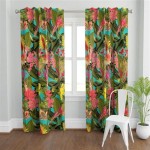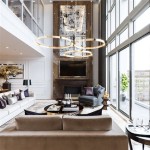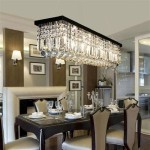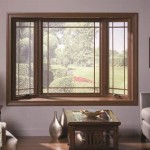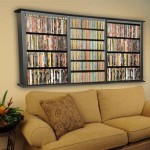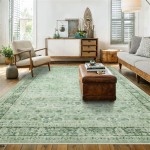The Allure and Practicality of Fake Beams in Living Rooms
The incorporation of beams into living room designs has experienced a resurgence in popularity, driven by a desire to introduce warmth, character, and a sense of architectural interest. While traditional, structural beams made of solid wood can be a significant undertaking in terms of cost, installation, and structural modifications, fake beams offer a compelling alternative. These manufactured beams provide homeowners with the aesthetic benefits of exposed beams without the complexities associated with load-bearing elements. This article explores the various aspects of fake beams, including their materials, installation techniques, design considerations, and advantages over their real counterparts.
The term "fake beams" encompasses a range of products, often referred to as faux beams or decorative beams. They are typically constructed from lightweight materials that mimic the appearance of natural wood. These materials allow for easier handling and installation, significantly reducing the project's overall cost and complexity. The choice of material directly impacts the beam's appearance, durability, and suitability for specific applications. Understanding these material characteristics is crucial for making informed decisions when selecting fake beams for a living room.
Materials Used in Fake Beam Construction
Several materials are commonly employed in the fabrication of fake beams, each possessing distinct properties that influence their performance and aesthetics. Polyurethane is a popular choice due to its lightweight nature, durability, and resistance to moisture and insects. Polyurethane beams can be molded to replicate the texture and grain patterns of various wood species, offering a realistic appearance. High-density polyurethane also provides a degree of insulation, potentially contributing to energy efficiency.
Another prevalent material is wood composites, such as medium-density fiberboard (MDF) or plywood. These materials are typically wrapped with a real wood veneer to provide an authentic wood surface. Wood composite beams offer a balance of affordability and aesthetic appeal, but they may be more susceptible to moisture damage than polyurethane beams. Careful selection of the veneer and proper sealing are essential to ensure longevity in environments with fluctuating humidity levels.
Less frequently used materials include fiberglass and metal. Fiberglass beams are exceptionally durable and resistant to environmental factors, making them suitable for outdoor applications or areas prone to high humidity. Metal beams, often made of aluminum, offer a sleek, modern aesthetic and are commonly used in contemporary designs. However, metal beams lack the warmth and natural appearance of wood, making them less common in traditional or rustic living room settings.
The choice of material should consider the intended use of the fake beams, the overall design aesthetic of the living room, and the budget constraints of the project. Understanding the advantages and disadvantages of each material is crucial for achieving the desired outcome.
Installation Techniques for Fake Beams
The installation of fake beams is generally more straightforward than installing structural beams, but proper planning and execution are essential to ensure a secure and aesthetically pleasing result. The specific installation method depends on the material of the beam, its size and weight, and the existing ceiling structure. A common approach involves attaching wood cleats or mounting blocks to the ceiling joists, which then serve as a support framework for the beams.
For polyurethane beams, construction adhesive is often used in conjunction with screws to secure the beams to the cleats. The adhesive provides an initial bond, while the screws offer long-term mechanical support. It is crucial to use appropriate screws that are long enough to penetrate the ceiling joists and strong enough to support the weight of the beam. The spacing of the cleats should be determined based on the beam's length and weight, ensuring adequate support throughout its span.
Wood composite beams, being heavier than polyurethane, may require a more substantial mounting system. Metal brackets or channels can be attached to the ceiling joists to provide a secure and level surface for the beams. Construction adhesive and screws are still typically used to further secure the beams to the brackets. Accurate measurements and precise alignment are crucial to prevent sagging or unevenness.
Regardless of the material, proper safety precautions must be taken during installation. Wearing safety glasses and gloves is essential to protect against dust and debris. When working at heights, a sturdy ladder or scaffolding should be used to ensure stability and prevent falls. If unsure about any aspect of the installation process, consulting with a professional contractor is highly recommended.
Design Considerations for Integrating Fake Beams
The successful integration of fake beams into a living room design requires careful consideration of several factors, including the beam's size, spacing, color, and style. The size of the beams should be proportional to the room's dimensions and ceiling height. Overly large beams can overwhelm a small space, while excessively small beams may appear insignificant in a large room.
The spacing between beams is another crucial design element. Closer spacing creates a more dramatic and visually impactful effect, while wider spacing offers a more subtle and airy feel. The spacing should be consistent throughout the room to maintain a sense of balance and harmony. The number of beams used should also be carefully considered to avoid overcrowding the ceiling.
The color and finish of the beams should complement the existing décor and architectural style of the living room. Darker wood tones, such as walnut or mahogany, create a sense of warmth and sophistication, while lighter wood tones, such as oak or maple, offer a more casual and airy feel. The finish of the beams can further enhance their aesthetic appeal. A distressed or weathered finish can add character and authenticity to a rustic design, while a smooth, polished finish is better suited for modern or contemporary settings.
The style of the fake beams should also align with the overall design theme of the living room. Simple, clean-lined beams are ideal for contemporary designs, while more ornate or intricately carved beams are better suited for traditional or Victorian settings. The beams can be further customized with decorative elements, such as corbels or medallions, to enhance their visual appeal.
Furthermore, the placement of the beams can be strategically used to accentuate certain features of the living room. For example, beams can be aligned with the fireplace or windows to draw attention to these focal points. They can also be used to define different zones within the living room, such as a seating area or a dining area. Careful planning and consideration of these design elements are essential for creating a cohesive and visually appealing space.
Finally, consider the lighting. Recessed lighting can be installed between the beams for a modern look, or pendant lights can be hung from the beams for a more traditional feel. The lighting should be coordinated with the overall design to create the desired ambiance.
Advantages of Fake Beams Over Real Wood Beams
Fake beams offer several compelling advantages over traditional, solid wood beams. The most significant advantage is the cost savings. Real wood beams can be prohibitively expensive, especially for larger rooms or when using rare or exotic wood species. Fake beams, made from more affordable materials, offer a cost-effective alternative without compromising on the desired aesthetic.
Another key advantage is the ease of installation. Real wood beams are heavy and require specialized equipment and expertise to install safely and securely. Structural modifications to the ceiling may also be necessary to support the weight of the beams. Fake beams, being lightweight, can be installed more easily and quickly, often without the need for professional assistance. This can significantly reduce the overall project cost and timeline.
Furthermore, fake beams are more consistent in their appearance than real wood beams. Natural wood beams can vary significantly in color, grain pattern, and texture, making it challenging to achieve a uniform look. Fake beams are manufactured to exacting specifications, ensuring consistency in appearance. This allows for greater control over the final design and ensures that the beams will complement the overall aesthetic of the living room.
Durability and maintenance are also significant considerations. Real wood beams are susceptible to moisture damage, insect infestation, and warping. They require regular maintenance, such as cleaning, sealing, and pest control, to maintain their appearance and structural integrity. Fake beams, particularly those made from polyurethane or fiberglass, are resistant to these issues and require minimal maintenance. This makes them a more practical and long-lasting option for many homeowners.
Finally, fake beams offer greater design flexibility. They can be easily cut to size and shaped to fit specific architectural features or design requirements. They can also be painted or stained to match any color scheme, allowing for greater customization and creative expression. Real wood beams, on the other hand, are more difficult to modify and customize, limiting design options.
In conclusion, fake beams provide a compelling alternative to real wood beams, offering a combination of cost savings, ease of installation, consistency in appearance, durability, and design flexibility. By carefully considering the material, installation techniques, and design considerations, homeowners can effectively integrate fake beams into their living rooms, creating a warm, inviting, and visually appealing space.
.jpg?strip=all)
How To Add Style With Faux Wood Beams Dream Green Diy

Beams In The Living Room And Dining Zevy Joy

How To Decorate Your Ceiling With Faux Wood Beams Talissa Decor

How To Add Style With Faux Wood Beams Dream Green Diy

Faux Wood Beams Heights House Jenna Sue Design

Faux Wood Beams Affordable Alternative Nelcos

Diy Wood Beams And Install With Shorter Ceilings Grace Oaks Designs

Decorative Ceiling Beams 11 Ways To Use Them In Your Home S Design

Beams In The Living Room And Dining Zevy Joy

Ceiling Beam Ideas And Inspiration

